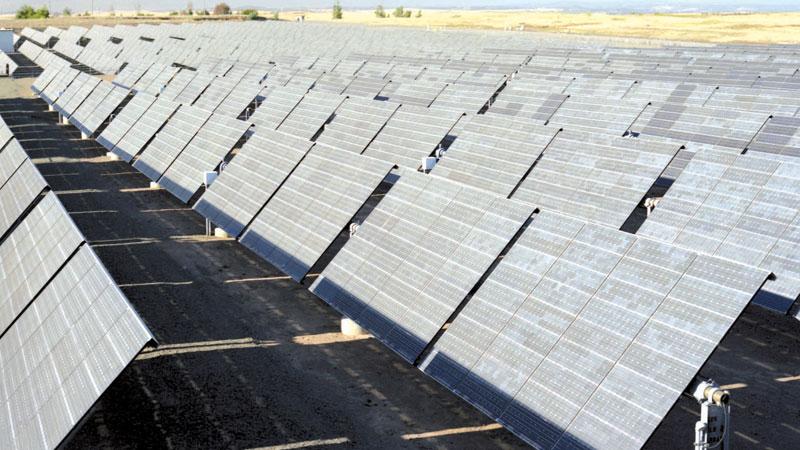
The Government of President Gotabaya Rajapaksa has a massive job on its hands, dealing with a faltering economy, as well as a number of crises to resolve.
One of the most important is the power crisis. Not a single power plant has been constructed in the past five years.
This is extremely serious. The very long lead times for power projects mean that generation of electricity lags seriously behind the need. The Ceylon Electricity Board (CEB) must close the gap by purchasing power from private power producers, which results in high costs of electricity and colossal expenditure for the state.
The Sri Lanka Podujana Peramuna (SLPP) manifesto, on which Gotabaya Rajapaksa campaigned, saw part of the solution in solar energy. It envisaged adding 800 MW of solar energy to the national grid with public-private partnerships in high-insolation regions of the country, such as Pooneryn, Mannar and Moneragala.
It also discussed the encouragement, within the next five years, of roof-top solar power systems, by making available to households and small businesses, bank loans with low/concessional interest rates, giving them access to low-cost energy.
The manifesto also undertook to “remove all impediments and incentivise the private sector and entrepreneurs interested in setting up renewable energy projects i.e. solar and wind,” promising that the government would provide assistance for so doing.
It also made a holistically ‘green’ proposal, to promote such agricultural water-conservation systems as drip irrigation and sprinkler systems, through the Agrarian Services Department, saving on fuel by enabling tax free importation of solar powered water pumps and solar photo-voltaic (PV) cells.
Certainly, solar PV cell installations are much easier to set up than other forms of power plants. The proximity of Sri Lanka to the equator means that sophisticated tracking devices may not be required in most cases, a simple stand for a panel array often sufficing, so no large-scale construction is necessary – especially in the case of rooftop-mounted PV panels.
Hitches
An electricity-generating system based on PV panels may, hence, be installed quickly and economically in locations with high insolation.
Hitches arise, however, in connection with the distribution of the generated electricity. Solar power is intermittent, not steady. The quantity of power produced depends on the amount of sunlight available, which can vary according to cloud cover, and to the time of day. This requires some method of stabilisation to make the power usable.
The biggest problem of all is that Sri Lanka, not possessing a great deal of industry, uses very little electrical power during the day. Consumption peaks in the evening to night hours, between 6 p.m. and 9 p.m., when people switch on their lights and watch television. This peak, more than double the off-peak demand, causes energy planners the biggest headache of all.
Storage
The abundantly available and cheap power of the sun cannot be used during this peak period. So to end the energy crisis using solar energy requires some kind of storage. Storage would also solve the problem of stabilising the intermittent supply.
Batteries could be used, but they add to the expense, and their disposal or recycling creates additional expenditure. South Australia has installed a 100 MW Tesla battery storage system, intended to stabilise the system, which has reduced considerably on the cost of electricity for consumers.
Now it plans to expand this capacity by 50 MW, to bring the total storage capacity to 193.5 MW hours, and make the battery system capable of replicating some of the features of a traditional coal or gas power station. Of course, this system may well be too expensive for Sri Lanka.
The government has, for some time, considered another storage alternative, a scheme for pumping water into a reservoir, to be released through a hydro-electric power station. It planned a 600 MW plant and storage reservoir, costing US$ 800 million. However, no action has been taken.
What the government has not, hitherto, considered is solar thermal power plant, with heat storage – which retains sufficient thermal energy to enable generation well into the peak hours. Such plants cost much more than solar PV cells, but are becoming cheaper. The cost would probably be less than that for solar PV cells combined with electrical storage facilities.
The SLPP manifesto made two more, related proposals: to take action to develop sea-water based refrigeration systems for multi-day fishing craft, encouraging the use of solar power in such equipment; and to experiment with introducing small-scale solar-powered refrigeration facilities for the storage of milk.
The concept of using solar power for refrigeration originally saw development in Sri Lanka in the 1960s, when J.C.V. Chinappah developed an ammonia-adsorption refrigeration system. Unfortunately, the system failed to be recognised in its home country, but did find use overseas, in cool rooms and ice machines. The implementation of the solar-power related proposals in the SLPP manifesto may well kindle a revival of the spirit of experimentation, which gave birth to Chinappah’s solar refrigerator.
